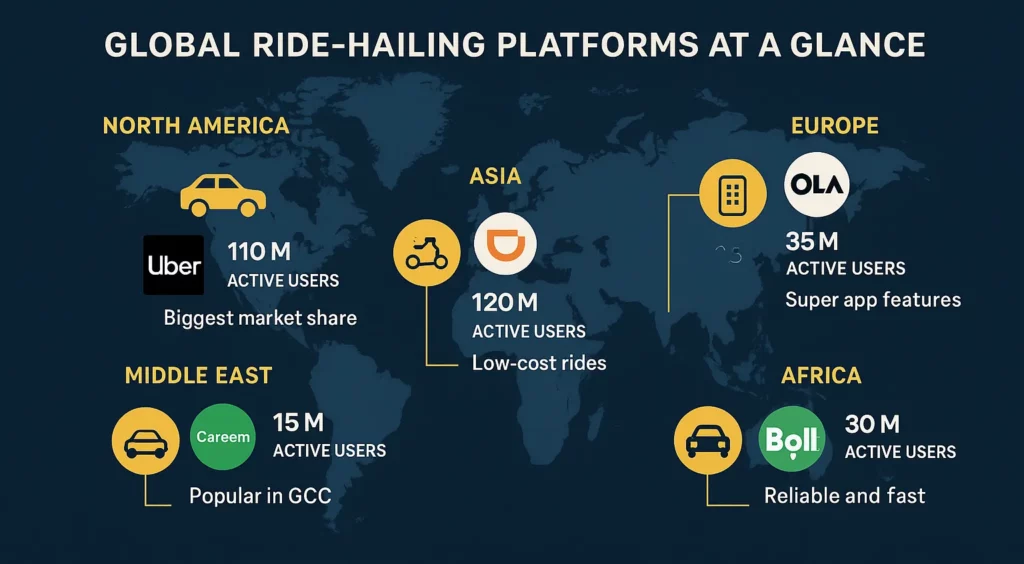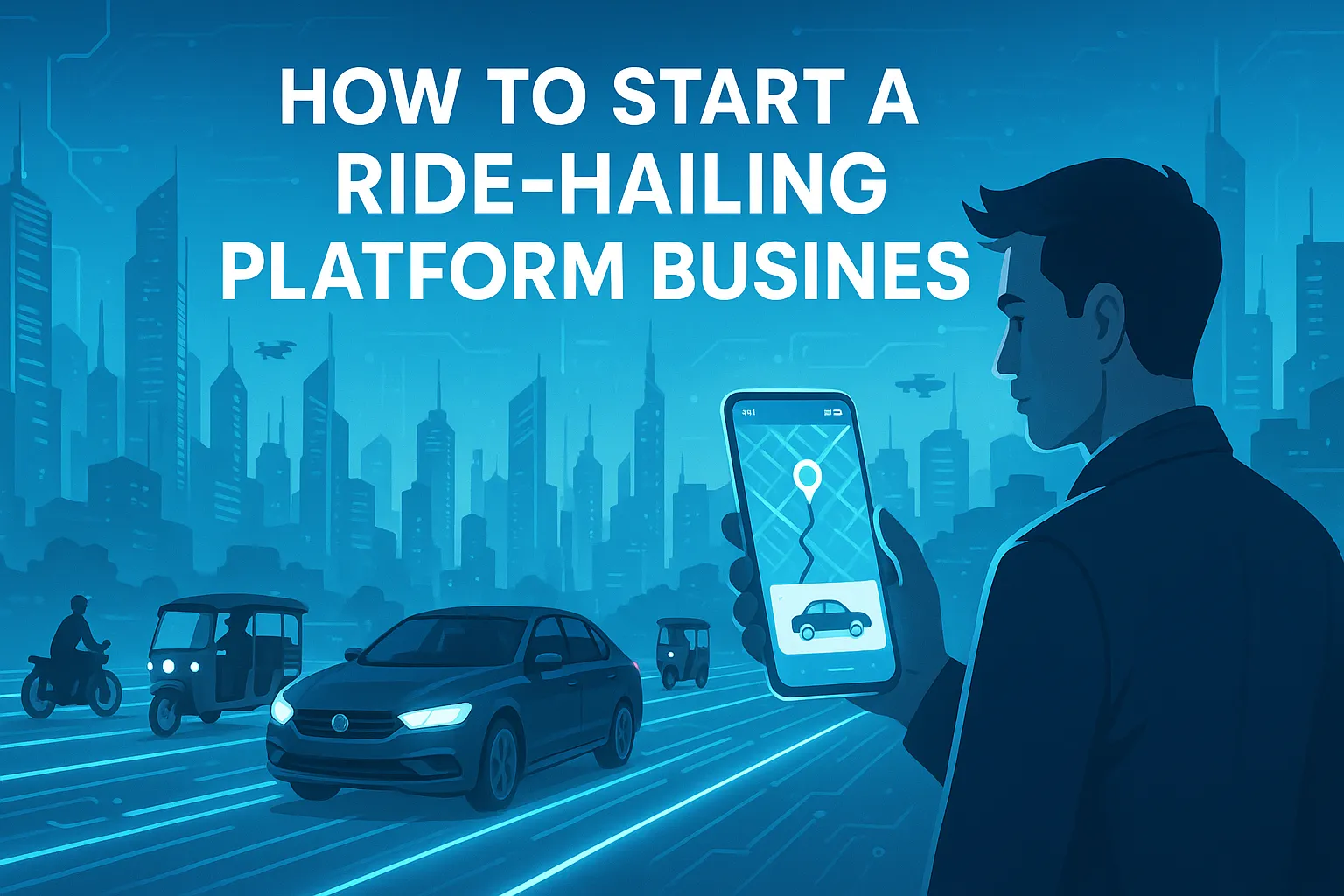Remember the first time you hailed a cab and it actually arrived on time? Yeah, me neither. But then came Uber, and boom — the entire taxi game changed overnight. Suddenly, your phone became the steering wheel to convenience. Fast forward a decade, ride-hailing isn’t just a convenience anymore; it’s a lifestyle. One that billions of people rely on daily.
If you’re reading this, you probably see the opportunity beyond just ordering a ride. You’ve noticed how regional players like Careem, Bolt, and Ola are owning local markets. Maybe you’ve even thought: “Why not my city? Why not my version?” Whether you’re a serial founder or someone just tired of app ideas collecting digital dust, this is for you.
This blog is your crash course in launching a ride-hailing platform — from ideation to ignition. We’ll decode what makes Uber tick, explore clones, and show you how to build smart, scale fast, and keep things monetization-friendly. Oh, and if you’re serious about launching? Miracuves has your back.
Ride-Hailing Isn’t Just Uber — Meet the Global Giants
Before we jump into the how, let’s zoom out and see who’s already cruising in this lane. Each of these companies cracked something specific — region, user behavior, or product model. Here’s the snapshot:
- Uber (US, Global): The OG, known for multi-mode options (car, bike, boat, helicopter, you name it).
- Lyft (US): Uber’s fun cousin, more focused on North America and driver-friendly incentives.
- Ola (India): Dominates Indian metros, and even branched into electric vehicles.
- Careem (Middle East): Acquired by Uber but still operates independently; deeply localized.
- Bolt (Europe, Africa): Quick, cheap, and focused on underserved urban areas.
- DiDi (China): Uber’s rival in Asia — rides, food, bikes, and even EV manufacturing.
- Grab (SEA): From rides to food to banking — Southeast Asia’s do-it-all super app.
Each platform started small, catered to a real pain point, and scaled with a laser focus. Your idea can too — especially if it adapts to your region’s vibe.

Step-by-Step: How to Start a Ride-Hailing Platform
1. Find Your Niche or Region
Going global is cool, but going local makes you bank. Ask:
- Is there a city or region underserved by Uber or Bolt?
- Are drivers happy with current platforms?
- Can you target a language group or ride type (like tuk-tuks, bikes, EVs)?
A niche helps you spend less, market smarter, and get loyal users.
2. Know Your Ride Types (and Drivers)
What kind of rides will you offer?
- Sedans? Scooters? Electric tuk-tuks?
- Will drivers be freelancers or fleet owners?
- Will you integrate women-only drivers (like SheCab in Pakistan)?
Understanding your offering early affects your tech stack, regulation, and cost.
3. Tech Stack Time — Buy, Clone, or Build?
Let’s be real — building an Uber from scratch can burn years and dollars. That’s where ride-hailing clone apps come in.
A high-quality clone (like Uber Clone, Careem Clone, etc.) gives you:
- Real-time tracking
- Driver-rider chat
- In-app payments
- Admin panel with analytics
4. Handle Legal, Insurance & Compliance Early
You don’t want your app trending on Twitter for the wrong reasons. Depending on your region:
- Secure transport licenses
- Partner with insurance firms
- Create a basic safety and background-check protocol
5. App UX — Think Less Taps, More Trust
User experience is king. If your riders have to tap 8 times to book a cab, they’re bouncing.
Tips:
- Use one-tap ride request
- Instant fare breakdown
- Panic button, ride tracking
- Driver ratings + feedback
6. Monetization Models You Can Use
Money talk time. How will you earn?
- Commission on rides: Standard cut from driver earnings
- Surge pricing: Boost rates during high demand
- In-app ads: Promote local businesses to riders
- Subscriptions: For riders or drivers (priority booking, fewer fees)
- Driver onboarding fees
The beauty? You can layer these. Start with commission, expand as your base grows.
7. Marketing It Like a Movement
Your brand should feel like a cause. Not just “cheaper rides,” but:
- Empowering local drivers
- Offering safer rides for women
- Fighting traffic with smarter routing
Launch ideas:
- Partner with colleges for free ride credits
- Referral bonuses for early adopters
- Instagram reels with funny cab stories
8. Scale Features As You Grow
Start lean, then go wild:
- Add ride scheduling
- Launch multi-language support
- Expand to deliveries (food, grocery)
- Integrate wallets or BNPL (Buy Now Pay Later)
You’re not just building a taxi app — you’re building a mobility ecosystem.
Conclusion: The Road Ahead
Launching your own ride-hailing app isn’t some wild dream—it’s a real, profitable path if you play your cards right. Tap into your city’s unmet needs, combine it with smart tech choices, and ride the wave of hyper-local innovation.
Because let’s face it: the next big ride-hailing success won’t come from Silicon Valley—it’ll come from someone like you who dares to build for their community.Miracuves is here to supercharge that vision—fast, functional, and totally future-proof. If you’re ready to hit “go” on your ride-hailing startup, let’s build something incredible together.
FAQs
Q1. What’s the minimum budget to start a ride-hailing app?
With Miracuves, you can kickstart your ride-hailing business for around $2K–$5K using a ready-made clone script. It’s a fast, cost-efficient launch — your app can be fully set up and running within 3–6 days.
Q2. How do I make my ride-hailing app stand out?
Focus on region-specific problems — like language, pricing, or safety features that Uber might overlook.
Q3. Can I launch with just 1 city?
Absolutely. In fact, it’s better! Start small, test everything, then scale smart.
Q4. Do I need both Android and iOS apps at launch?
Yes — or use a hybrid app that works on both. Most clone scripts offer this option.
Q5. How do I attract drivers to my platform?
Better payouts, flexible hours, bonuses, and local marketing work wonders. Treat them like partners, not resources.
Q6. Is it legal to launch a ride-hailing service without owning cars?
Yes. Most platforms operate with driver-owned vehicles. Just ensure you’re compliant with local transport laws.








